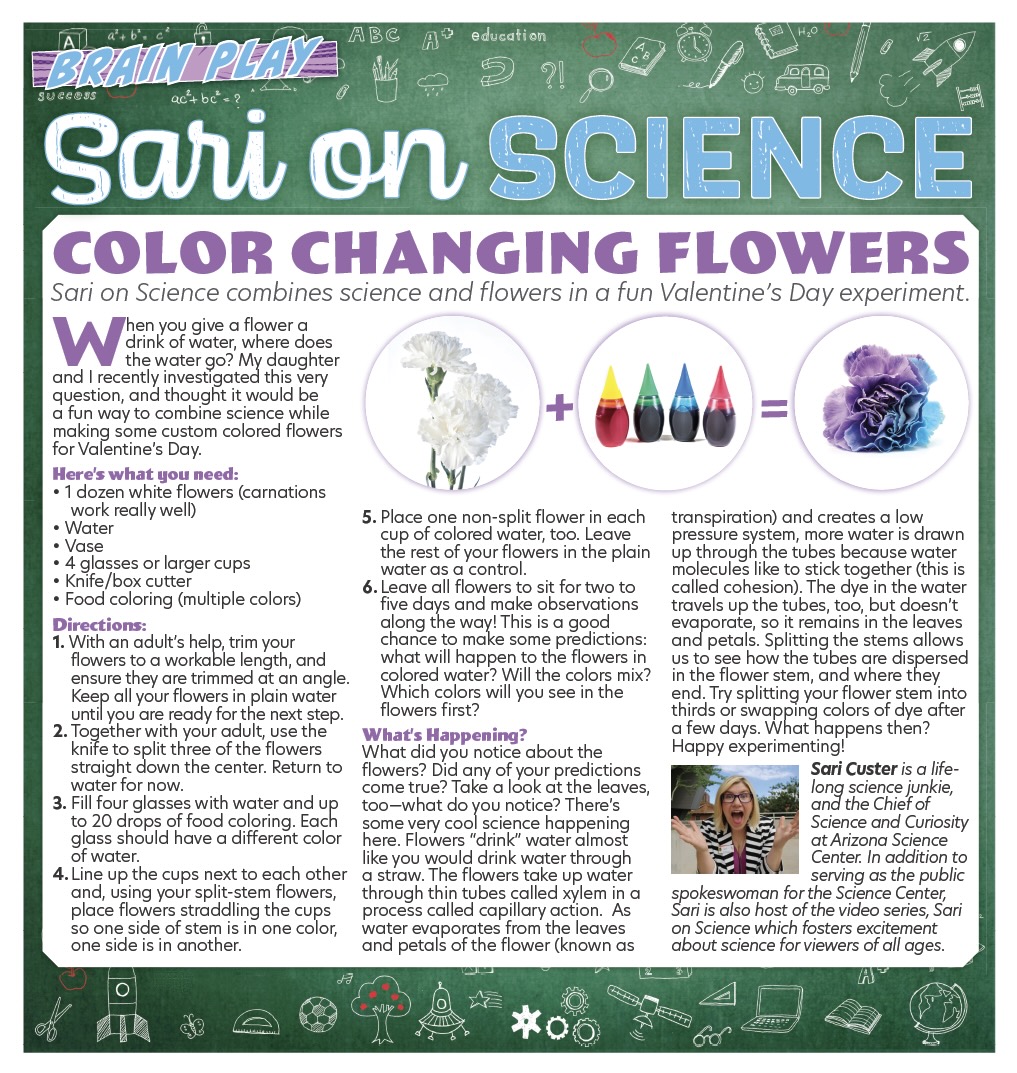Color Changing Flowers
Sari on Science combines science and flowers in a fun Valentine’s Day experiment.
When you give a flower a drink of water, where does the water go? My daughter and I recently investigated this very question, and thought it would be a fun way to combine science while making some custom colored flowers for Valentine’s Day.
Here’s what you need:
1 dozen white flowers (carnations work really well)
Water
Vase
4 glasses or larger cups
Knife/box cutter
Food coloring (multiple colors)
Directions:
With an adult’s help, trim your flowers to a workable length, and ensure they are trimmed at an angle. Keep all your flowers in plain water until you are ready for another step.
Together with your adult, use the knife to split three of the flowers straight down the center. Return to water for now.
Fill four glasses with water and up to 20 drops of food coloring. Each glass should have a different color of water.
Line up the cups next to each other and, using your split-stem flowers, place flowers straddling the cups so one side of stem is in one color, one side is in another.
Place one non-split flower in each cup of colored water, too. Leave the rest of your flowers in the plain water as a control.
Leave all flowers to sit for two to five days and make observations along the way! This is a good chance to make some predictions: what will happen to the flowers in colored water? Will the colors mix? Which colors will you see in the flowers first?
What’s Happening?
What did you notice about the flowers? Did any of your predictions come true? Take a look at the leaves, too––what do you notice? There’s some very cool science happening here. Flowers “drink” water almost like you would drink water through a straw. The flowers take up water through thin tubes called xylem in a process called capillary action. As water evaporates from the leaves and petals of the flower (known as transpiration) and creates a low pressure system, more water is drawn up through the tubes because water molecules like to stick together (this is called cohesion). The dye in the water travels up the tubes, too, but doesn’t evaporate, so it remains in the leaves and petals. Splitting the stems allows us to see how the tubes are dispersed in the flower stem, and where they end. Try splitting your flower stem into thirds or swapping colors of dye after a few days. What happens then? Happy experimenting!
Sari Custer is a life-long science junkie, and the Chief of Science and Curiosity at Arizona Science Center. In addition to serving as the public spokeswoman for the Science Center, Sari is also host of the video series, Sari on Science which fosters excitement about science for viewers of all ages.






